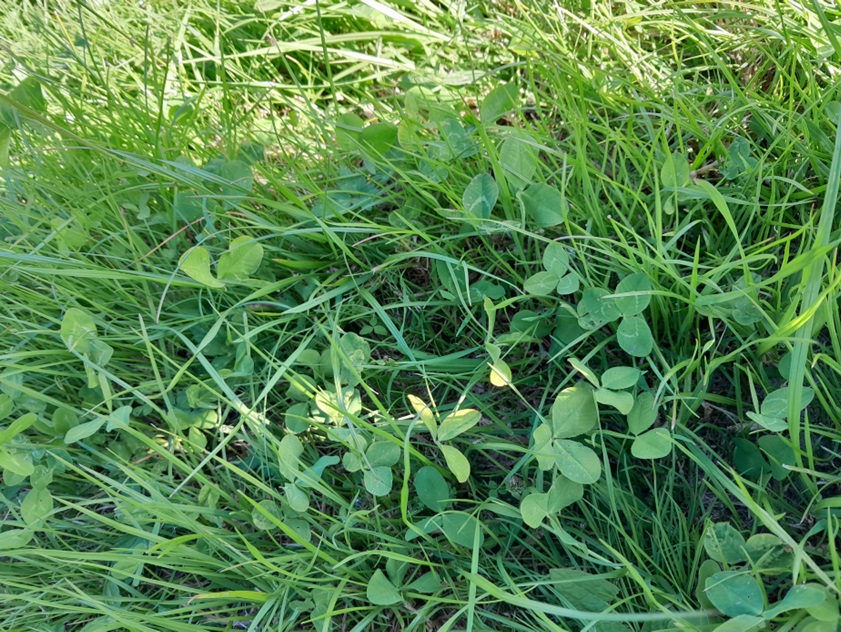How To Convert To Organic Grassland
An introduction to the critical factors for a successful Organic conversion.
This is the first in a series of Organic Conversion articles which will discuss the main considerations for any business looking to convert land to organic and follow the work carried out by an organic dairy farmer in south west Scotland when he purchased conventional land adjacent to his organic holding to include it as part of his organic enterprise.
The principles of organic farming aim to promote the natural processes occurring in soils, crops and animals and enhance these natural biological cycles to minimise the use of man made products such as fertiliser, pesticides and medicines. When converting land from a conventional to organic system, there is a transition period where the soil has to adjust from being supplemented with chemical inputs to optimising its own biological processes.
The series will cover;
- Introduction to the Critical Success Factors for Organic Conversion
- Soil Health and Fertility – Conversion in Practice
- Grassland Management – Conversion in Practice
- Farm Management—Conversion in Practice
- Reflecting on the Process - Farmer’s Perspective

Industry Standards & Support
When converting land to organic status, there are some key considerations to keep in mind;
- Full conversion of land takes 2 years
- You must affiliate with an organic standards body, either the Soil Association or Scottish Organic Producers Association (SOPA)
- The following funding is available for Organic Conversion and Maintenance is available through the Agri-Environment Climate Scheme (AECS)
| Conversion rates per Ha | Years 1 & 2 | Years 3 to 5 |
|---|---|---|
| Arable | £280 | £65 |
| Improved Grassland | £140 | £55 |
| Unimproved Grassland/Rough Grazing | £12.50 | £8.50 |
| Fruit & Vegetable | £400 | £200 |
- If applying for AECS support, conversion cannot begin until after your application has been submitted.
- You must have an Organic Viability Proposal approved by one of the above organic certification bodies at the point of application.
Soil Health and Management For Organics
When converting land from a conventional to organic system, optimising soil health and fertility are considered to be the most important factors for the future success of the farming operation. Well managed soils are essential to maximise the output from an organic system and minimise losses of key nutrients to the environment. It is imperative to consider the biological, chemical and physical properties of soil when assessing soil health.
Soil pH
The use of some nitrogen fertilisers, in particular Ammonium Nitrate, can speed up the acidification of soils and when coupled with natural acidification processes including leaching, rainfall and crop uptake many soils have sub-optimal pH levels. In trials carried out for the Soil & Nutrient Network Farms, almost half of those sampled recorded low pH levels. You can read the full report here.


Clover is an essential plant in any organic system as it has the ability to fix atmospheric nitrogen that supplies fuel for the growth of grass and other crops in the absence of synthetic Nitrogen. Long running pH trials carried out by SRUC showed that at pH’s below 5.5 clover is not present and it was not until the pH level reached around 6 that optimum clover levels were seen. The trial also showed that at high pH level, above 6.5 the abundance of clover present reduced and so over liming should be avoided. The photographs below illustrate the levels of clover present at varying pH levels
Soil Organic Matter
The organic matter of soil (SOM) is a key part of soil health, it provides a major source of nutrients, is an important part of soil structure and plays a vital role in soil biological activity. It can also act as carbon store, offsetting CO2 emissions. The Soil Association estimate that well managed soils have the following levels of SOM depending on soil type.
| Light Soils | Over 2.5% |
|---|---|
| Medium Soils | Over 3% |
| Heavy Soils | Over 3.5% |
Soil organic matter status can be maintained and improved by the application of organic manures, in particular Farmyard manure and crop residues. Analysis of organic manures before application also allows us to understand the value of the nutrients available and their contribution to plant growth when considered alongside the nutrient status of the soil.
Grassland Management For Organics
The key to the success of most organic farms is the nitrogen fixing that occurs in well managed grass and clover leys. The clover in the sward fixes atmospheric nitrogen which feeds the grass swards and when well managed has the capability of producing the same herbage yields as a conventional farm using 120-180kg/N/ha.
The key to the success of most organic farms is the nitrogen fixing that occurs in well managed grass and clover leys. The clover in the sward fixes atmospheric nitrogen which feeds the grass swards and when well managed has the capability of producing the same herbage yields as a conventional farm using 120-180kg/N/ha.

In grazed grass leys, it is common for clover to make up 30-50% of the sward. Due to the lack of “clover safe” herbicides, many conventional grass swards have lost much of their clover population due to historical weed control programmes. Establishing clover in productive grass swards can be difficult as the clover plants are outcompeted by dominant grass species and weeds. The recommended approach to establishing clover is to tightly graze or cut the sward and then broadcast with clover seed in March or September before lightly harrowing or rolling. Like all seedlings, the establishing plants require sufficient light, space and fertility to thrive so careful management of the crop canopy can assist development of these young plants. Clover plants are also more sensitive to cold soils and ensuring the young plants have enough time to develop their root systems before soils cool down in Autumn will ensure they have the energy reserves to survive the winter. Managing weeds in newly sown leys with a mechanical topper or animals such as sheep can also help provide the light to the base of the sward which is required by clover.
Silage swards tend to comprise of ryegrasses and red clover as opposed to white clover. The red clover not only fixes nitrogen to promote grass growth but also boost protein levels in silage, helping to reduce the need for expensive protein supplementation in winter rations.
The application of rotational grazing also provides an opportunity to maximise the utilisation of grass, increasing the amount of grass harvested but also working with the growth habits of perennial ryegrass, optimising the regeneration of tillers and improving longevity of swards whilst providing highly nutritious feed for animals.
Additional Resources
Sign up to the FAS newsletter
Receive updates on news, events and publications from Scotland’s Farm Advisory Service
